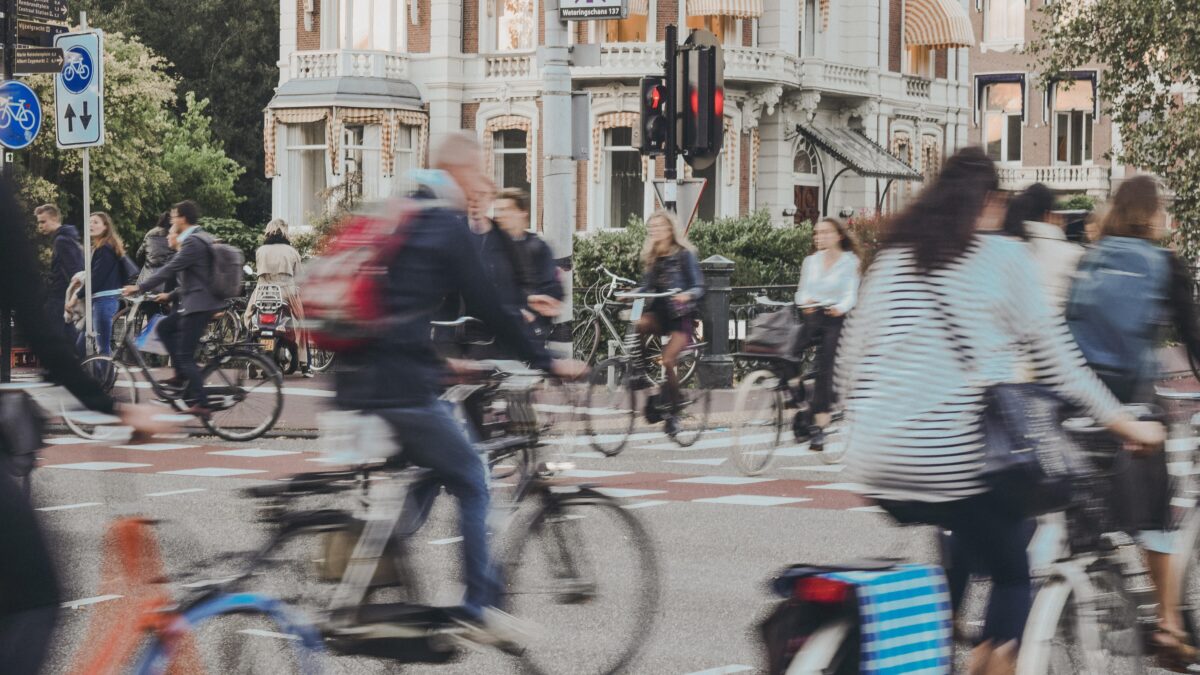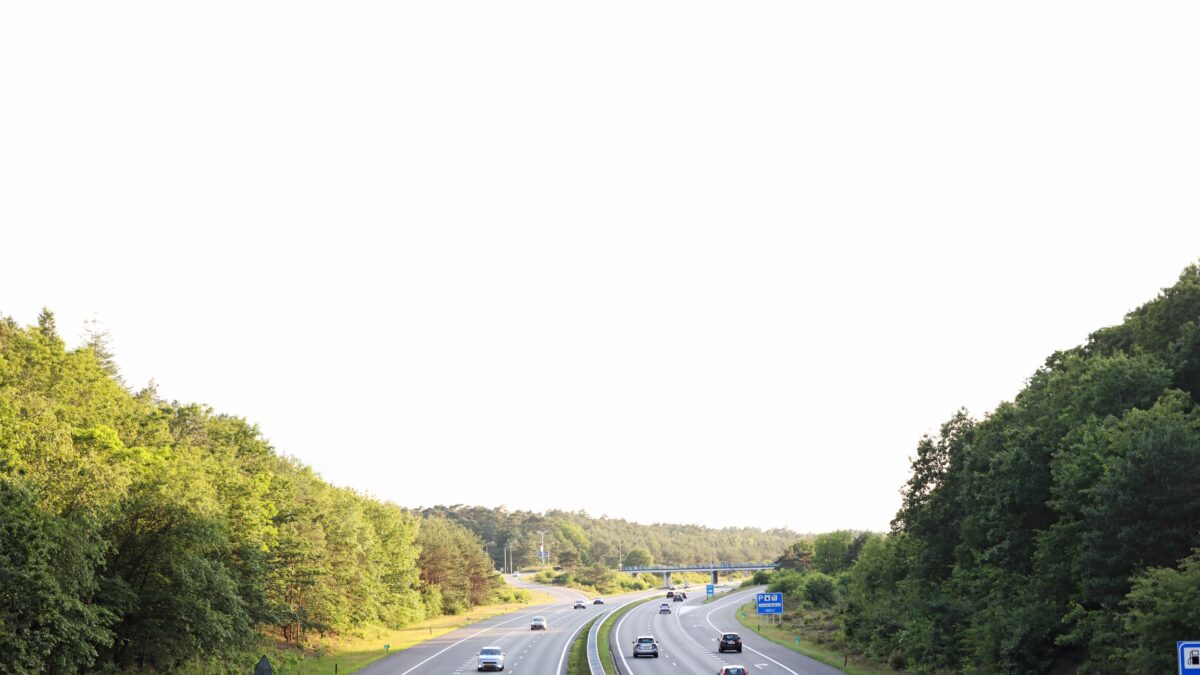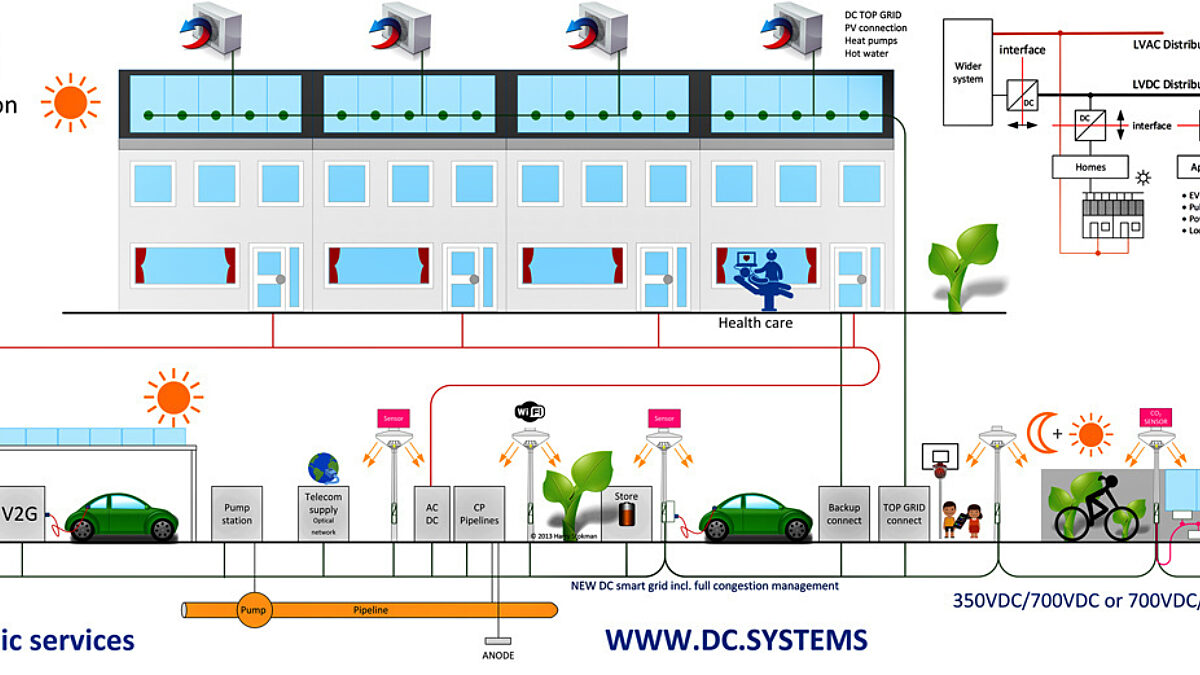The Second Grid
DC accelerates the energy transition, requiring an upgrade of the existing grid while taking into account future developments and customer needs.

The Dutch Case
The current energy networks cannot facilitate the desired energy transition as we phase out natural gas, add PV panels on our roofs, and replace our fleets with electric transport. Even with smart grids, we need additional capacity as the number of users grow. By innovating with DC technology, building this new energy infrastructure is highly streamlined, and meets customers' current as well as future wishes.
The Future Is Electric
According to the energy agenda, our streets will be filled with 1 million electric cars by 2025, and 100% by 2050. After the phasing-out of natural gas completely by 2050, we will heat our well-insulated houses with electric heat pumps. For all these advancements, we depend on the local energy grid. Smart grid techniques will ensure better utilization of the networks by shifting the electricity consumption based on supply and demand in the neighbourhood without being at the expense of reliability and efficiency. For instance, if a neighbour's EV is done charging and is still connected, power can be shifted to your washing machine that is running a full load. However, this is an ideal world scenario that is limited by restrictions in the existing networks; not to mention regulatory organizations that have a say in societal modifications.

In The Netherlands and across Europe, combustion engine vehicles are being quickly replaced with EVs.
Investor and Industry Interest
Large companies of different backgrounds want to build their own energy grids: automotive industries see a new revenue model in the electric feeding of cars, telecom companies see an extra opportunity to recoup their investments in the 5G network, and building funds see a profitable investment. Municipalities also show interest in their own network for utility functions, to which electric transport can also be connected.
If all these parties have their way, we run several different risks:
- Cherry picking: only the most profitable streets are served;
- Full streets: if several parties work side by side, multiple networks are laid in parallel;
- Network operators multiply: the consolidation of network operators to seven regional grid operators that has been achieved in the last decades is canceled out.
A Future Proof Second Grid

"Our electrical system is the biggest asset of mankind, of which we are fully dependent. A vision is needed to secure the future of this system." 2012 © Concept The Second Grid by Harry Stokman
The figure above shows an alternative and future-proof solution: a second network that offers extra capacity in addition to the existing network. Solar panels and heat pumps from various houses are connected to this DC grid on top of the roofs. Down in the street, on the same cable, there are connections for charging stations for electric cars and bicycles, 5G transmitters, utility functions such as pumps and refuse containers, and lamp posts. The existing network will continue to do what it is known for: providing a reliable and efficient electricity supply.
The second grid uses Direct Current instead of Alternating Current, powering devices such as bicycles, electric cars, 5G installations, lamp posts and heat pumps - all inherently running on DC. This system prevents energy conversion and does not require large real-time IT systems. Thus, consumers receive a smaller electricity bill, and have reliable, efficient access to energy.